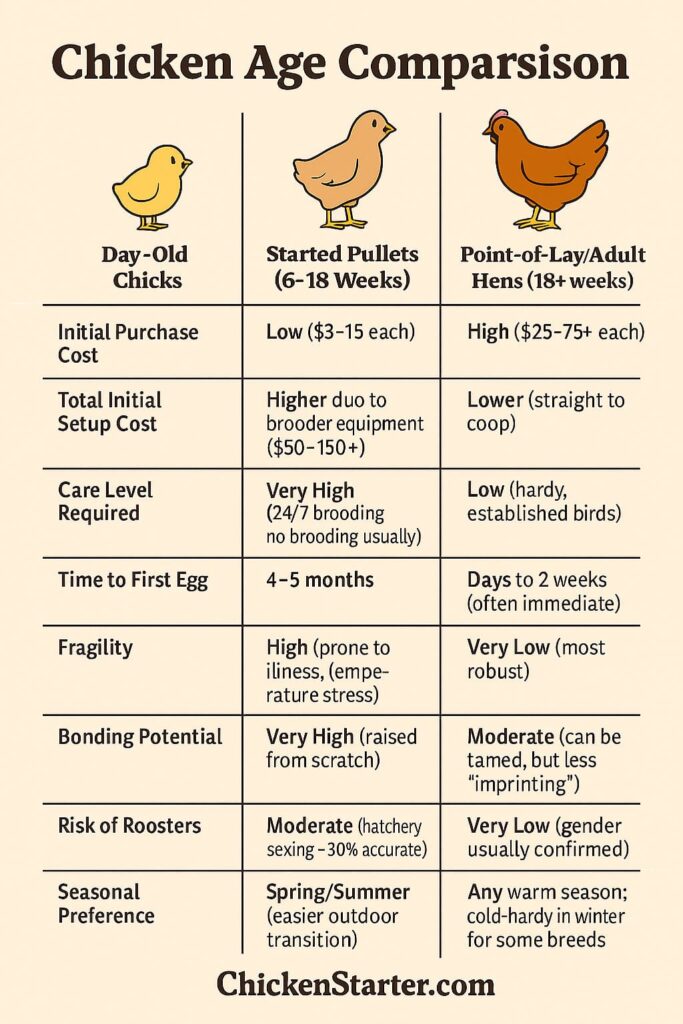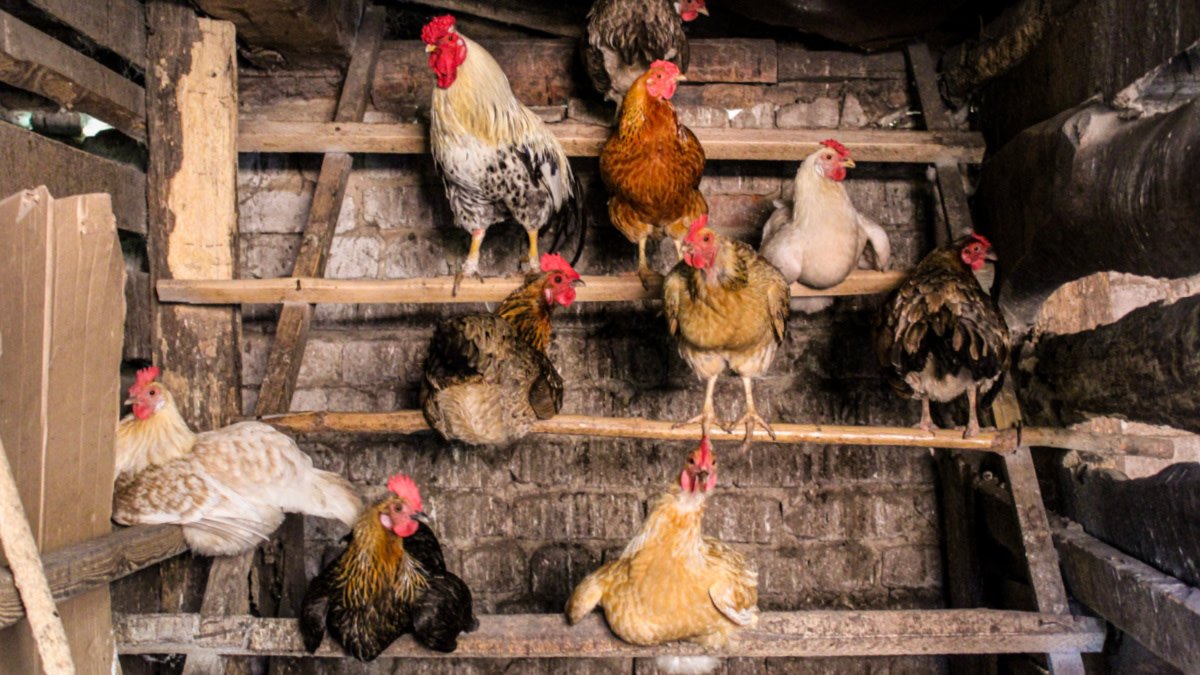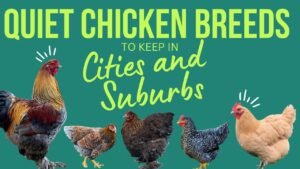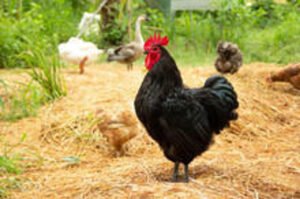So, you’re thinking about raising backyard chickens — but wondering what’s the best age to start? Whether you’re eyeing fuzzy day-old chicks or full-grown hens ready to lay, the decision comes down to time, budget, and goals. Let’s break it down and find the age that fits your chicken journey.
TL;DR: The best age to start raising chickens depends on your time, budget, and goals. Day-old chicks are cheapest but require intense brooding care. Pullets (young birds) are hardier and lay sooner with less fuss. Adult hens offer immediate eggs with minimal setup, but cost more upfront and may have a shorter laying lifespan. Consider your commitment level, climate, and desired egg timeline to pick the right age.
Quick Answer: Picking the Right Chicken Age
The best age depends on what you’re looking for:
- Day-old Chicks (1-2 days old): Choose if you want the full experience, enjoy nurturing, have time for daily care, and want to save money on initial bird purchase. Be ready for intensive brooding and a 4-5 month wait for eggs.
- Started Pullets (6-18 weeks old): Ideal if you want less brooding hassle, faster eggs (weeks instead of months), and a good balance between cost and convenience. They’re hardier than chicks and easier to tame than adult hens.
- Point-of-Lay/Adult Hens (18+ weeks old): Go for these if you want immediate eggs, minimal hands-on care, and have a coop ready. They cost the most upfront but get you fresh eggs fastest.
Chicken Buying Ages Explained: Chicks, Pullets, or Hens?
Chickens are available at a few key stages. Knowing the terms helps:
- Day-Old Chicks: One or two days old. Tiny, fluffy, cute. Require significant care. Like tiny, peeping alarm clocks.
- Started Pullets (Young Birds): Young females, 6-18 weeks old. Haven’t laid eggs. Past the fragile chick stage, often fully feathered. Don’t need extra heat. Ah, the awkward teenage phase!
- Point-of-Lay Hens: Pullets just about to lay. Usually 18-22 weeks old. Ready for your coop and immediate egg production. What most people imagine: fresh eggs, pronto!
- Adult Chickens (Laying Hens or Older Birds): Fully mature, actively laying, or retired. Established pecking order, generally hardy. The wise, clucking elders.
Each age offers a different start, with its own joys and challenges. Let’s break this down like you’re five eggs deep into your first flock.

Chicken Age Comparison Table
| Feature | Day-Old Chicks | Started Pullets (6-18 weeks) | Point-of-Lay/Adult Hens (18+ weeks) |
|---|---|---|---|
| Initial Purchase Cost | Low ($3–$15 each) | Moderate ($20–$65 each) | High ($25–$75+ each) |
| Total Initial Setup Cost | Higher due to brooder equipment ($50–$150+) | Lower (straight to coop) | Lowest (straight to coop) |
| Care Level Required | Very High (24/7 brooding, fragile) | Moderate (less fragile, no brooding usually) | Low (hardy, established birds) |
| Time to First Egg | 4-5 months | Weeks to 2 months | Days to 2 weeks (often immediate) |
| Fragility | High (prone to illness, temperature stress) | Low (past most vulnerable stage) | Very Low (most robust) |
| Bonding Potential | Very High (raised from scratch) | High (still young enough to bond well) | Moderate (can be tamed, but less “imprinting”) |
| Risk of Roosters | Moderate (hatchery sexing ~90% accurate) | Low (gender more obvious with age) | Very Low (gender usually confirmed) |
| Seasonal Preference | Spring/Summer (easier outdoor transition) | Any warm season; cold-hardy in winter for some breeds | Any warm season; hardiest for winter starts |
Should You Start With Day-Old Chicks? Pros & Cons
If a deep bond from watching chickens grow from fluffballs appeals, day-old chicks could be your best starting point. It’s rewarding, but not for the faint of heart. Ready for a 24/7 peeping commitment?
The Rewards and Challenges of Chick Care
The Good:
- Deep Bonding: Chicks become tame and friendly, often perching on you. My first chick? Out like a light in my palm—pure fluff joy.
- Full Control: You direct their diet, environment, and socialization from day one. Leads to healthier, happier, docile adults. You feel like a chicken god!
- Educational: Great for families. A lesson in life cycles, responsibility, animal husbandry. Who knew biology could be so cute?
The Tough:
- Fragility: Chicks are delicate. Prone to health issues, environmental changes. Some don’t make it. It’s harsh. Prepare for potential heartbreak.
- Constant Vigilance: They need consistent warmth, food, and water. Monitor daily for distress. Forget sleeping in—these little guys have demands!
What Do Baby Chicks Need in Their Brooder?
A brooder is a chicken nursery. You can’t just put day-old chicks in a regular coop! Here’s what they need:
- Brooder Box: Large plastic bin, stock tank, or a cardboard box (with caution!) works. Needs high sides for drafts and escapes. My dog crate lined with cardboard worked perfectly. Tiny escape artists will try!
- Heat Source: Crucial. Chicks can’t regulate their own body temperature.
- Heat Lamp: Classic choice. Suspend safely above brooder. Start at 95°F (35°C) first week, then lower by 5°F (2.8°C) each week until they’re feathered out (around 6 weeks) or the ambient temperature is warm enough. Colorado State University Extension has guidelines. This temperature isn’t just a number; it’s life or death. Too cold, they huddle and get sick. Too hot, they spread out, pant, and stress. The right spot keeps them healthy. Watch chick behavior: huddled means cold; scattered means hot. They should move freely. A tiny avian thermostat.
- Brooder Plate: A safer, more energy-efficient alternative that chicks can huddle under, mimicking a mother hen. Brands like RentACoop offer popular brooder plates. No more worrying about fire hazards from heat lamps, a HUGE relief!
- Bedding: Pine shavings are ideal. Avoid cedar (toxic) and slippery surfaces like newspaper (causes leg issues). No slippery chick disco.
- Food & Water: Use chick-specific feeders and waterers to prevent drowning. Look for equipment from brands like Little Giant or Harris Farms. Chicks need “starter” feed, specially formulated for their rapid growth. Brands like Purina, Nutrena, or Manna Pro offer good starter feeds. And trust me, they’ll turn that water into muddy soup fast!
- Space: Chicks grow fast — really fast. Plan ahead so your brooder doesn’t become a feathered mosh pit. Without enough space, they get stressed and peck each other. Ample room prevents stress, pecking, and illness. It’s an investment in their well-being.
Time Commitment and Fragility of Chicks
Raising chicks is like having feathered newborns. You’ll frequently change bedding (daily early on), refill water (they make it muddy fast!), and check their heat. This takes significant daily time, especially in the first weeks. If your life is packed, this might not be what’s the best age to start raising chickens for you. No judgment, just real talk!
Why Pullets Might Be Your Best Starting Age
Started pullets often hit the sweet spot for new chicken keepers, balancing hands-on involvement with quicker results. They’ve passed the most vulnerable stage but are young enough to acclimate. Think of them as pre-teens—still impressionable, but less needy!
Advantages of Purchasing Started Pullets
- Hardier: Pullets are tougher than chicks. Developed stronger immune systems, less prone to sudden death. Less heartache. Phew!
- Less Brooding Hassle: In warmer months, pullets (6+ weeks) are fully feathered and don’t need extra heat or a brooder. You can often move them straight into a prepared coop, greatly cutting initial setup. Goodbye, heat lamp anxiety!
- Easier to Tame: You miss the very first days, but pullets are still young enough to bond through handling and treats. Still open to becoming your feathered best friend.
- Faster Eggs: Big win! Instead of waiting 4-5 months, you’ll get eggs from pullets in weeks. Who doesn’t want farm-fresh eggs sooner? Instant gratification, with chickens!
Reduced Brooding Needs and Faster Egg Production
The biggest win with pullets is skipping the brooder. No heat lamps, constant temperature checks, or tiny waterers to scrub multiple times a day. You’re buying time and reducing risk. My neighbor got beautiful brown eggs within a month of starting with 16-week-old pullets. A huge relief for her, as she wasn’t ready for a “chick emergency.” I understood her frustration with constant chick vigilance.
Lower Risk of Unwanted Roosters
When buying day-old chicks, even “sexed” ones, a rooster is possible. Hatcheries state 90% accuracy. This means for every 10 “hens” you order, there’s a real chance one might turn out to be a rooster. It’s a small percentage, but for those in urban areas with rooster restrictions, that 10% can be a big headache, potentially forcing you to rehome a bird you’ve grown attached to. It’s why pullets, where gender is more obvious, offer extra peace of mind. No one wants an unexpected 4 AM wake-up call!
Why Adult Chickens Might Be the Best Start for You
If immediate eggs and minimal initial fuss are your priorities, adult chickens might be your ideal choice. This is for the “I want it yesterday” crowd, and honestly, sometimes that’s exactly what you need.
Benefits of Buying Point-of-Lay Hens
- Instant Eggs (Almost!): Ultimate convenience. Point-of-lay hens (18-22 weeks old) are about to produce. You’ll likely see your first eggs within days or weeks. Nothing like collecting that first egg from your backyard! Pure joy! This immediate reward motivates new keepers and justifies the higher upfront cost.
- No Special Care: These birds are fully feathered, hardy. No special brooding equipment. Just a comfortable, secure coop and quality layer feed from brands like Purina or Nutrena. Minimal fuss, maximum eggs!
- Proven Layers: From a reputable source, these hens are bred to lay well. You know what you’re getting. No guessing games!
- Skip the “Awkward Teen” Phase: No more gangly, half-feathered pullets. These ladies are fully formed and fabulous.
How Do You Safely Add Adult Chickens to Your Flock?
Adult birds are easier to care for, but adding new chickens to an existing flock can be tricky due to the pecking order. If this is your first flock, it’s simpler. If adding to an existing flock, here’s a mini-walkthrough:
- Quarantine (Crucial!): Always quarantine new birds for at least 30 days in a separate, secure area before introducing them to your main flock. This protects your existing birds from potential diseases. Seriously, don’t skip this step unless you enjoy chicken illnesses.
- Separate but Visible: After quarantine, place new birds in a wire dog crate or temporary pen inside the main coop or run for a few days. This lets both groups see each other without direct contact. It’s like a chicken meet-and-greet, but through bars.
- Night Integration: Easiest way to introduce them. Once your flock roosts, gently place new birds alongside them. In the dark, they wake up together, which is sneaky, but chickens waking together often assume they’ve always been flockmates. Provide extra feeders and waterers to ensure new birds aren’t intimidated away from resources.
Considerations for Rescued or Older Hens
Sometimes you find older hens for sale, or rescued ex-commercial hens. These can be a fantastic, low-cost start, but consider:
- Egg Production: Older hens lay fewer eggs, or may have stopped. Don’t expect a dozen a day.
- Temperament: Varies based on past experiences. Some shy, others friendly. A bit of a lottery, but often rewarding.
- Health History: Unknown health issues or past injuries. A thorough health check by you or a vet is wise. Curiosity helps here!
Comparing the Costs: Chicks vs. Pullets vs. Adult Chickens
Money talks. Initial purchase price is just one part of figuring out what’s the best age to start raising chickens. Let’s break down hidden costs.
Initial Purchase Price Differences
Generally, older chickens cost more initially. Someone else already invested the time, feed, and effort to raise them.
- Day-Old Chicks: Usually $3–$15 each from hatcheries or farm supply stores like Tractor Supply Co. or Rural King, though rare breeds can be more. Remember, shipping costs and minimum order quantities often apply when buying from hatcheries like My Pet Chicken or Murray McMurray Hatchery.
- Pullets (6-16 weeks old): You’ll generally pay $20–$65 each for started pullets, depending on their exact age, breed, and vaccination status. Some specialized breeds or sources like Dare 2 Dream Farms might go higher.
- Point-of-Lay/Adult Hens: Expect to pay $25–$75+ each for birds at point-of-lay or actively laying, with prices varying by breed, age, and location. Rescued hens might be cheaper, around $5–$20, but with unknown history.
While these ranges help budget, saving on chicks upfront often means spending on brooder supplies and higher electricity bills for heat lamps. Because chicks require a brooder and pullets/adults don’t, your total initial setup cost for chicks may be $50–$150 higher, even though their individual purchase price is lower. Check local listings or hatchery sites for current prices — rural areas or farm swaps may be cheaper than urban backyard coops.
Ongoing Feed and Equipment Expenses
While chicks are cheaper to buy, their early care needs specific, extra equipment:
- Chicks: You’ll need a brooder, a heat lamp or brooder plate (like RentACoop), special chick starter feed (e.g., Purina or Manna Pro Starter), and tiny feeders/waterers (e.g., Little Giant or Harris Farms). These are one-time costs, but add up initially. That cute fuzzy stage isn’t free!
- Pullets & Adult Hens: Go straight into your main coop. You generally only need standard feeders, waterers, and layer feed (like Nutrena Layer Feed). If you already have a coop, your upfront equipment cost might be minimal. This is where the savings kick in.
Long-Term Investment and Return
Consider the full picture.
- Chicks: Highest initial time investment, lower upfront cash. You raise them how you want. Eggs come later, but you’ll have a longer laying lifespan. It’s a marathon, not a sprint.
- Pullets: Good middle-ground. Moderate initial cost and time. Eggs come sooner. A nice compromise if you’re not fully committed to the chick hustle.
- Adult Hens: Highest initial cash outlay, but minimal time investment and immediate egg production. They might have a shorter laying lifespan left, but for quick returns, they’re great. If you need eggs ASAP, these ladies are your champions!
Assessing Your Readiness: Key Factors Beyond Chicken Age
Choosing what’s the best age to start raising chickens isn’t just about the birds; it’s about you. Are you truly ready for feathered friends?
Your Time Availability and Experience Level
- High Time/Patience: Day-old chicks are best if you have ample time, enjoy nurturing, and are ready for intensive care. Even as a beginner, if you’re dedicated, it’s rewarding. Be honest with yourself!
- Moderate Time/Beginner to Intermediate: Pullets are fantastic. You bond, but daily demands are lower. Often the sweet spot for a busy beginner. You get a taste of chicken parenting without sleepless nights.
- Low Time/Experienced or Busy Beginner: Adult hens are perfect if you want a flock ready to go. They take the least initial hands-on intervention. For the “set it and forget it” types (mostly!), this is your lane.
Coop and Run Setup: What’s Ready When?
Your chicken housing must match the birds’ age:
- Chicks: Need an indoor brooder. Your outdoor coop doesn’t need to be predator-proof or ready until they’re 6-8 weeks old. Don’t rush them outside, or you’ll have chilly (and potentially gone) chicks!
- Pullets & Adult Hens: Need a fully predator-proof, ready-to-go outdoor coop and run before they arrive. They’ll move in immediately. No time for last-minute DIY disasters! Need help deciding how many chickens to start with? Don’t miss our guide on How Many Chickens You Need for a Family of 4 — it walks you through space, egg needs, and more. For additional detailed housing recommendations, resources from University of Kentucky Extension can be a great help.
Climate and Seasonal Considerations for Chicken Age
- Warm Weather Start (Spring/Summer): Ideal for all ages. Chicks move outdoors sooner, pullets/adults thrive. Most hatcheries operate then, and it’s simply easier! If you’re in southern states like Texas or Florida, spring is ideal for starting chicks — they’ll transition outside sooner.
- Cold Weather Start (Fall/Winter): If you start with chicks in colder states like Colorado or Michigan, they’ll need consistent brooder heat longer, raising energy costs and fire risks. My curiosity gets the best of me, but even I wouldn’t try starting chicks in winter unless necessary! Sustained cold stress compromises immune systems, causing long-term health problems. Pullets or adult hens are better for colder months; they’re hardier and regulate their own temperatures. This direct link between age and seasonal climate means that your location significantly influences your best starting age.
Health and Biosecurity: Protecting Your Flock at Any Age
No matter what’s the best age to start raising chickens, good health practices are non-negotiable. This isn’t a suggestion, it’s a commandment. The CDC’s Backyard Poultry Safety page provides crucial guidance on staying healthy around backyard poultry, as birds can carry germs like Salmonella and Campylobacter even when healthy. As Dr. Derek Foster, an associate professor at NC State College of Veterinary Medicine, states, “A chicken can be perfectly healthy and still be shedding Salmonella… Salmonella is carried by chickens, whether you have three in your backyard or thousands in a barn.” This highlights why good hygiene is paramount, even with seemingly healthy birds.
Common Health Concerns for Young Chickens
Chicks are especially vulnerable. Watch out for:
- Pasty Butt: Droppings dry and block their vent. Sounds minor, but fatal if not gently cleaned. Strong Animals Chicken Essentials guides treating this common (and slightly gross) frustration.
- Coccidiosis: Common parasitic disease. Good hygiene and medicated feed (or vaccination) are key. The Arkansas Cooperative Extension Service has prevention and treatment info. Don’t let this little bugger sneak up on you! Coccidiosis spreads fast and can decimate a young flock; managing it saves birds.
- Respiratory Issues: Drafts and poor ventilation cause sneezes and sniffles. Consult a vet or experienced keeper for illness signs (lethargy, ruffled feathers, watery droppings, appetite loss). Better safe than sorry for flock health!
Quarantine Procedures for New Arrivals
I stress this: ALWAYS QUARANTINE NEW CHICKENS! Chicks, pullets, or adults—isolate them separately for at least 30 days. This means a different coop/brooder, separate feeders, waterers, and no shared equipment. Why? Many chicken diseases are highly contagious, and birds can carry illnesses without symptoms. One sick new bird can wipe out your whole flock. Trust me—the frustration of preventable loss is gut-wrenching. That 30-day window is your golden shield. It allows most diseases to show symptoms before spreading. It’s the simplest, most effective way to protect your flock and avoid heartbreaking losses. Care for your existing flock before tending to new ones to avoid cross-contamination.
Maintaining a Healthy Environment
- Cleanliness: Regular cleaning of coops, brooders, feeders, and waterers prevents bacteria and disease buildup. A clean coop is a happy coop (and a happy owner)!
- Ventilation: Good airflow prevents respiratory issues and ammonia buildup. Avoid drafts, especially for young birds. It’s a fine line!
- Space: Ample space per bird reduces stress and aggression, preventing health problems. Overcrowding is a recipe for disaster and leads to unhappy pecking!
Which Chicken Age Is Right for You? Final Thoughts
Deciding on the best age for your flock comes down to your personal situation and goals. No right or wrong answer, just what’s right for you. Don’t let anyone tell you otherwise!
Matching Chicken Age to Your Goals (Eggs, Pets, Meat)
- For Pets/Deep Bonding: Day-old chicks offer the most profound connection. You’ll be amazed at their personality.
- For Quick Eggs: Point-of-lay hens are your best bet. Pullets are a close second. Who doesn’t love immediate results?
- For Meat Birds: Day-old meat-breed chicks are standard.
- For a Balanced Approach: Pullets offer a good mix of bonding, reduced initial care, and quick eggs. Often the sweet spot for beginners, giving a taste of everything without overwhelming commitment.
Beginner-Friendly Breeds and Their Age-Related Needs
Some breeds are docile, hardy, and beginner-friendly, simplifying the age decision. Great choices for any age:
- Rhode Island Red: Hardy, excellent layers, good dual-purpose. Workhorses of the chicken world.
- Orpington (especially Buff Orpington): Known as the “golden retriever” of chickens—calm, friendly, good layers. If you want a cuddly chicken, this is your pick!
- Plymouth Rock (Barred Rock): Docile, cold-hardy, good layers. Reliable and no-nonsense.
- Australorp: Exceptional layers, calm temperament. Prepare for an eggcellent adventure!
- Sussex (Speckled Sussex): Friendly, curious, good layers. Their speckled feathers are adorable.
These breeds handle transitions well, whether chicks or new adults.
Expert Tips for a Successful Start with Chickens
- Do Your Homework: Research your chosen breed and their specific needs. Knowledge is power, especially for happy chickens!
- Start Small: Don’t get overwhelmed. Start with 3-5 chickens for a manageable flock, especially as a first-timer. You can always add more! Learning the ropes is easier with a smaller crew.
- Prepare in Advance: Have all supplies (brooder, feed, waterers, coop) ready before chickens arrive. Avoid last-minute panic—it’s not fun!
- Observe Your Birds: Learn their normal behaviors to spot issues fast. You’ll quickly pick up on their quirks and moods.
- Enjoy the Process: Raising chickens is incredibly rewarding—full of learning, fresh eggs, and entertaining personalities. It can be frustrating, but the joy and satisfaction are worth it!
Mini-Checklist: Still Unsure Which Age Is Right For You? Ask Yourself…
- How much time can I commit daily? (High for chicks, moderate for pullets, low for adult hens)
- Is my coop ready and predator-proof now? (Yes for pullets/hens, not necessary yet for chicks)
- How soon do I want fresh eggs? (Immediately for point-of-lay hens, weeks for pullets, months for chicks)
- What’s my budget for initial setup vs. long-term care? (Chicks save on purchase price but require more equipment; adult hens cost more upfront but less initial setup)
- Am I prepared for potential chick mortality and unexpected roosters? (Higher risk with chicks)
- Do I want to experience the full growth cycle from tiny chick to laying hen? (Chicks offer the most hands-on experience)
FAQs – What’s the Best Age to Start Raising Chickens? (Chicks vs Pullets vs Hens)
Q: Can I mix different ages of chickens in the same coop right away?
A: Not recommended, especially chicks with adults. Adult chickens can be aggressive towards smaller, weaker newcomers, causing injury or death. Always quarantine new birds. Introduce them slowly, ensuring they are roughly the same size if possible. Nobody wants a chicken brawl!
Q: What’s the difference between a “pullet” and a “hen”?
A: A “pullet” is a young female chicken (under one year) not yet laying. A “hen” is an adult female actively laying. Once a pullet starts laying, she becomes a hen! It’s her big coming-out party!
Q: How many chickens should a beginner start with?
A: 3 to 5 chickens are ideal for beginners. This lets them flock comfortably without overwhelming you. You want to enjoy the process, not run a large farm from day one!
Q: Do I need a rooster for my hens to lay eggs?
A: No, hens will lay eggs without a rooster present. Roosters are only needed if you want fertilized eggs for hatching chicks. For a backyard flock focused on egg production, a rooster is optional and sometimes prohibited by local ordinances.
Q: What should I feed my chickens?
A: Feed your chickens a commercially prepared feed appropriate for their age and laying status (e.g., chick starter, grower feed, layer feed). Brands like Purina, Nutrena, or Manna Pro offer good options. Treats can be given in moderation (less than 10% of their diet). Laying hens also need a supplemental calcium source like oyster shell to ensure strong eggshells.
Q: How long do chickens live and lay eggs?
A: Chickens can live 5-10 years, with some living up to 15 years. However, their peak egg production usually occurs in their first 1-3 years. After that, egg production typically declines, though many hens will continue to lay a reduced number of eggs for several more years.
Q: Can chickens free-range in my backyard?
A: Chickens can free-range, but it comes with risks. While they love to forage for bugs and greens, free-ranging exposes them to predators (hawks, foxes, dogs) and potential dangers like traffic or toxic plants. It also makes egg collection harder. A secure, predator-proof run is often preferred for safety and easier management.
Q: What kind of coop do I need?
A: A good coop protects chickens from predators and weather, provides roosting space, and nesting boxes. It needs proper ventilation but no drafts. Aim for at least 3-4 square feet per bird inside the coop and 8-10 square feet per bird in an attached run. Consider a coop that’s easy to clean for hygiene.
Q: How often do chickens lay eggs?
A: Most common laying breeds (like Rhode Island Reds or Leghorns) will lay an egg nearly every day during their peak production years, typically 5-6 eggs per week. Egg laying can slow down during winter months due to less daylight or during molting.

Oladepo Babatunde is the founder of ChickenStarter.com. He is a backyard chicken keeper and educator who specializes in helping beginners raise healthy flocks, particularly in warm climates. His expertise comes from years of hands-on experience building coops, treating common chicken ailments, and solving flock management issues. His own happy hens are a testament to his methods, laying 25-30 eggs weekly.



